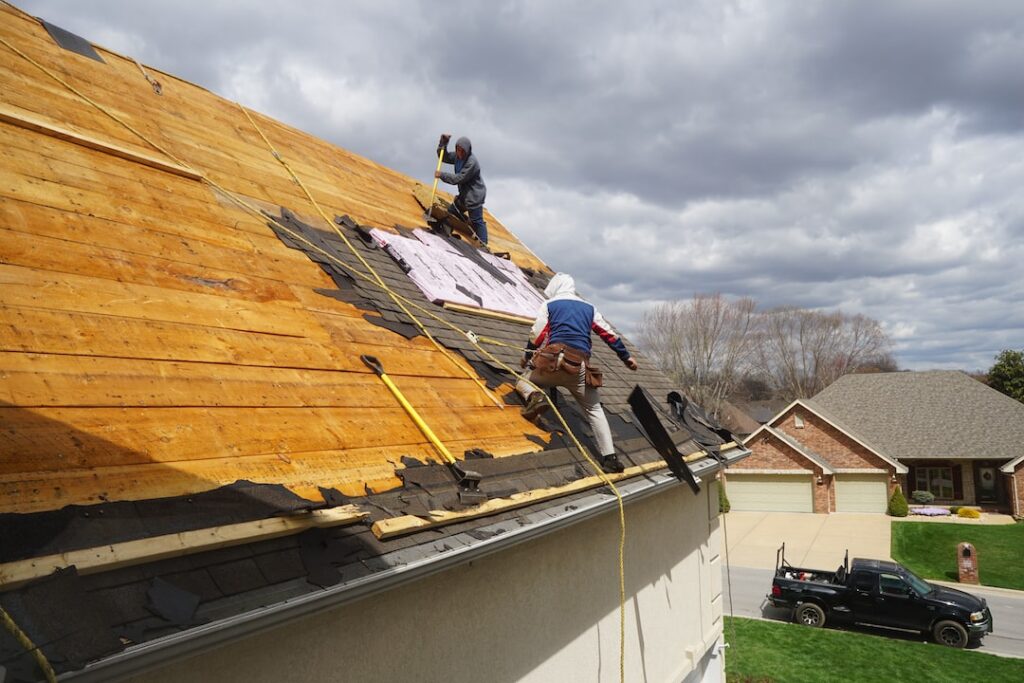A robust roof is your first line of defense against unpredictable weather patterns. Severe weather events make it more crucial to ensure your home is prepared. This blog post guides you through essential steps to protect your roof from Mother Nature’s wrath.
Understanding Severe Weather Threats
Every region has its weather challenges, whether hurricanes, heavy snowfall, or scorching sun. For instance, roofs in hurricane-prone areas must withstand high winds, while those in snowy regions must bear heavy loads. Familiarizing yourself with these threats allows you to tailor your protective measures accordingly.
Being proactive rather than reactive can save homeowners a lot of stress and money. According to specialists for roof repairs, a well-maintained roof not only resists damage but also enhances the overall durability of your home. By taking appropriate measures tailored to local climate conditions, you minimize the likelihood of costly repairs down the line. Ultimately, knowing the enemy is half the battle. By identifying the types of severe weather your roof may face, you can implement specific strategies to fortify your home and ensure it stands firm no matter the weather.
Regular Roof Inspections Are Key
Routine inspections are crucial for preventing minor issues from becoming major problems. Aim to inspect your roof, ideally in the spring and fall. This way, you can catch any potential damage before severe weather takes its toll. Inspections should involve checking for loose or missing shingles and damaged flashing. Professional inspections offer a more thorough assessment. Consider hiring a certified inspector who can evaluate your roof’s condition and recommend necessary repairs. This expertise can significantly impact your roof’s longevity and resilience. Remember, a small investment in regular inspections can prevent extensive damage and high repair costs in the future. Keeping your roof in prime condition ensures it remains your home’s strongest shield against severe weather.
Shingle Selection Matters
Choosing the right shingles is a crucial element in protecting your roof. Use impact-resistant shingles to withstand harsh conditions like high winds and hail. Beyond material, pay attention to the installation process. Adequately installed shingles are less likely to lift or blow off during storms. Ensure your contractor follows manufacturer guidelines and employs techniques that enhance wind resistance. Investing in quality installation can significantly improve your roof’s performance under stress. Keep them clean and debris-free, and promptly replace damaged or missing pieces. This proactive approach helps maintain their integrity and ensures they function effectively when severe weather strikes.
Reinforce Roof Flashing
Flashing is critical in directing water away from vulnerable areas on your roof, such as chimneys, vents, and skylights. To prevent leaks during heavy rainfall:
- Ensure your flashing is securely fastened and free from gaps or damage.
- Regularly check it for signs of rust or corrosion, especially in humid climates.
- For added protection, consider upgrading to more durable flashing materials like copper or stainless steel.
These options offer increased resistance to weathering and can provide enhanced long-term performance. Proper flashing installation and maintenance are crucial components of a weatherproof roof. By prioritizing these details, you ensure your roof remains watertight and capable of repelling even the heaviest downpours.
Trim Overhanging Trees
High winds can break branches, causing them to fall and damage your roof. Regularly trim trees near your home to ensure branches are at least ten feet away from your roofline. Fallen leaves and debris can lead to water buildup and potential leaks. Regular tree maintenance helps prevent this issue, keeping your roof clean and free from hazards. Additionally, trees should be assessed for signs of disease or instability, as these can increase their likelihood of falling during storms. Taking proactive steps to manage tree growth around your home ensures your roof remains safe and secure, reducing the risk of damage during severe weather conditions.
Install Storm Straps and Ties
Storm straps and ties are essential components for homes in hurricane-prone areas. These devices secure your roof to the walls of your home, preventing uplift during high winds. Consult a professional to determine your roof structure’s best type and placement. Installing storm straps can significantly enhance your roof’s ability to withstand severe weather, providing peace of mind during storms. Additionally, these devices are often required for homes in certain regions, ensuring compliance with local building codes. Investing in storm straps and ties ensures your roof remains intact even during the most powerful storms.
By understanding the specific threats in your area and implementing these essential strategies, you fortify your home against nature’s fury. From routine inspections to upgrading materials, each step contributes to a resilient roof that stands firm in adversity. For those who want to explore further, consider contacting local roofing professionals for personalized advice and solutions. With these steps, you’re well on your way to peace of mind and a secure home, no matter the weather.






